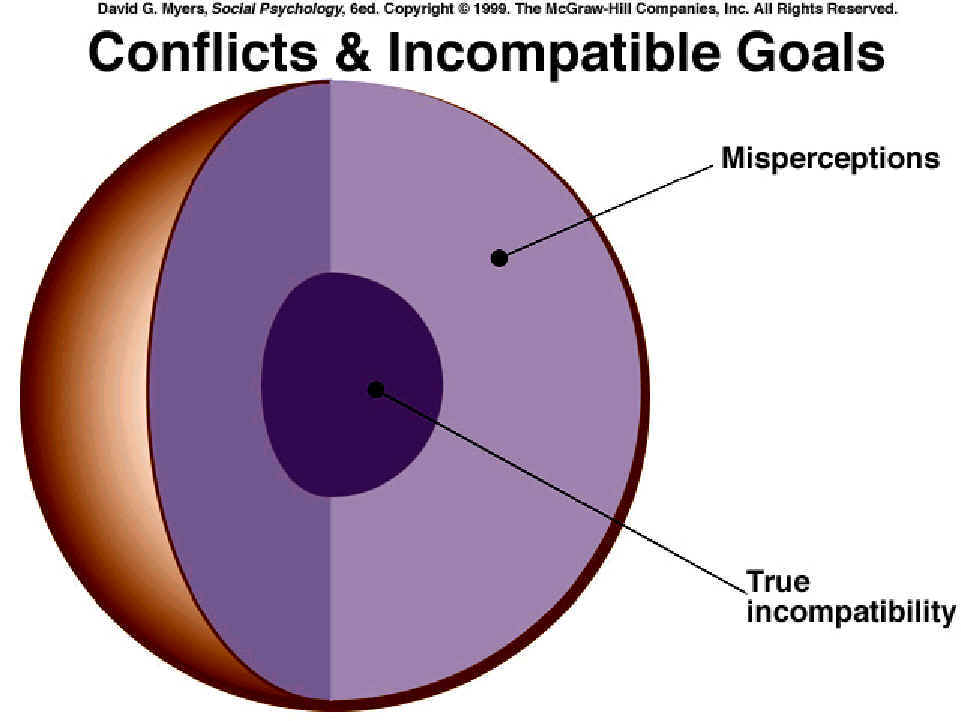|
| |
Conflict and
Peacemaking
Conflict
 | Social dilemmas
 | The prisoner’s dilemma |
 | Resolving social dilemmas |
|
Tit for Tat
Begins with a cooperative opening play and then always
matches the other player’s last response
 | First, it pays to be "nice." |
 | Second, a successful strategy is "provocable." |
 | Third, a successful strategy is "forgiving." |
Conflict
 | Competition |
 | Perceived injustice |
Misperception
Pruitt and Rubin (1986): Conflict
Strategies and the Dual Concern Model
 | Hypothetical case of Peter Colger who has been looking
forward to a two-week vacation at a quiet mountain lodge. His wife, Mary, however, has
expressed her preference for a busy seaside resort
|
Peacemaking
 | Contact |
 | When does desegregation improve racial attitudes?
 | Friendship |
 | Equal status contact |
|
Cooperation
 | Common external threats |
 | Superordinate goals |
 | Cooperative learning |
 | Generalizing positive attitudes |
 | Group and superordinate identities |
Sherif’s Summer Camp Study
 | Competition between two groups of boy campers escalated |
 | Superordinate goal of restoring water to make enemies
into friends
 | Remember this at church camp! |
|
Threats and Cooperation
 | Shomer, Davis, & Kelley, 1966 - under certain limited
conditions threat may promote cooperation
 | When threat is the only form of communication possible,
and when it can signal one’s intent without actually producing a negative outcome for
the opposing party, it may facilitate cooperation |
 | In most cases, however, threat increases rather than
decreases tension |
|
Peacemaking
 | Communication
 | Bargaining |
 | Mediation |
 | Arbitration |
|
Conciliation
 | GRIT
 | Graduated and reciprocated initiatives in tension
reduction |
 | To de-escalate international tensions |
|
Max Bazerman: Negotiation
 | Expanding the fixed pie |
 | Dehexing the winner’s curse
 | Get a mechanic’s evaluation |
|
 | De-escalating conflict |
 | Undercutting overconfidence |
 | Reframing negotiations |
Rubin’s (1981) Psychological Traps
 | Set limits on your involvement and commitment. |
 | Once the limit has been set, stick to it. |
 | Do not look to other people to see what you should do. |
 | Be conscious of your desire to impress others. |
 | Remind yourself of the costs involved. |
 | Remain vigilant. Avoiding one trap does not guarantee you
will successfully avoid the next. |
|
|
